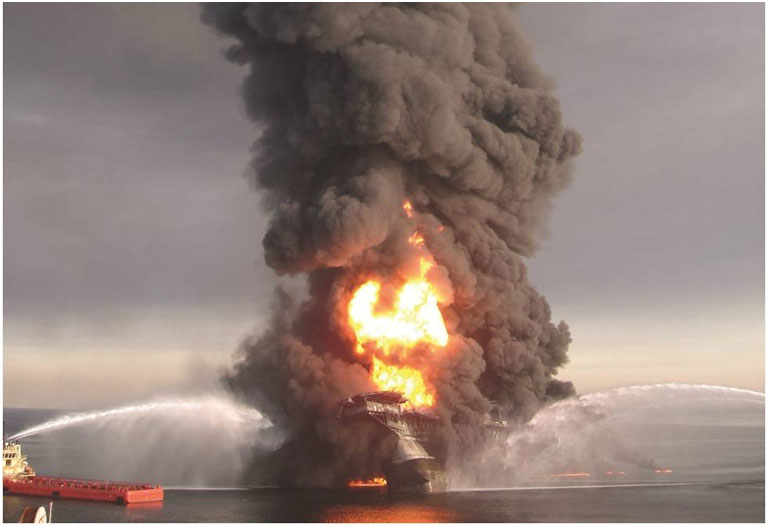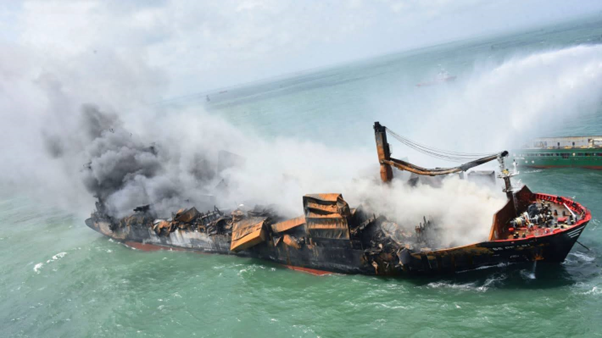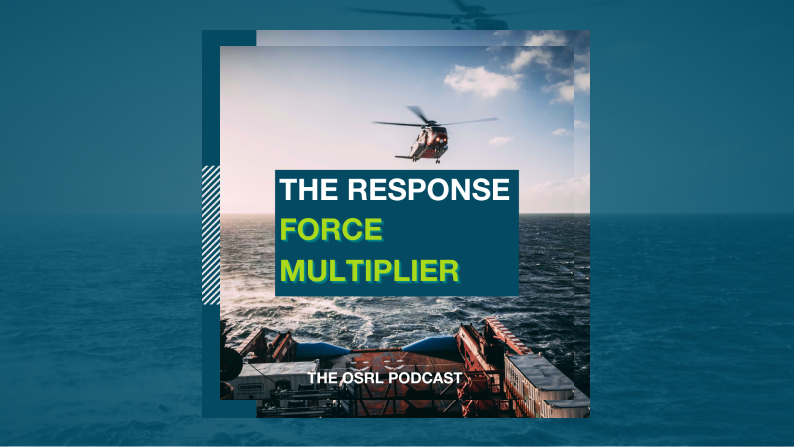Oil Spills and Climate Change
Events such as the recent spill in Norilsk, Russia have highlighted that some organisations are missing key risks when designing systems to prevent and respond to oil spills. It is incumbent on all operators to ensure they continuously review their risk profile and consider changing or emerging risks such as climate change and the current pandemic, particularly in remote locations where any response is inevitably complex.
The media compared the recent Norilsk incident in Russia to the Exxon Valdez, and the Russian Government declared it a Disaster of Federal Significance. The underlying causes of the two events, however, couldn't be more different, with Norilsk Nickel blaming permafrost thaw as the critical cause for the structural failure of the diesel storage tank.
The volumes of hydrocarbons released during incidents are generally declining, primarily due to good working practices, stricter regulations and increasing understanding for oil and gas companies to become more environmentally conscious. However, recent noteworthy spill incidents in the Bahamas (2019) following Hurricane Dorian, and the UK (2014) following severe flooding, highlight a factor potentially not previously considered; climate change.
How could more extensive preparedness enable companies to imagine the unimaginable caused by unprecedented climate change?

Companies have traditionally used past weather data to determine risk
Few companies have attempted to integrate the increasing risks associated with the changing climate into their planning and operations. While many companies are focused on improving energy efficiency or working towards reducing their carbon footprint, they also face a changing physical environment. Uncertainties in how to manage and understand these physical risks could be preventing companies from achieving resilience against the effects of extreme weather.
As many experts believe that the Arctic is warming faster than any other place on earth, the focus has been mainly on the retreating ice (Source: ArcticWWF). But significant changes are happening on-land through the thawing of vast areas of permafrost. This thawing was one of the attributing factors that led to the loss of 20,000 tonnes of diesel into watercourses and substrate around Norilsk. Given the vast amount of oil infrastructure in this region from pipelines to storage tanks, it provokes the consideration that more facilities could be at risk as permafrost thaws.
The Bahamas' Incident in 2019 was a result of the damage brought about by Hurricane Dorian. This hurricane became a devastating Category 5 storm in September 2019 as it made landfall over the Abaco Islands and later the Grand Bahamas Island. With sustained winds of 185mph, it was the strongest hurricane on record. These unrivalled winds over a sustained period of 24 hours were able to overcome the structure of the reinforced floating roofs through the prolonged attack.
Although the building of the storage facility considered the risk of hurricanes, the sustained onslaught of Dorian overcame those defences. The hurricane lifted an estimated 119,000 barrels of oil from the tanks, depositing it across a vast area of forest and inland marsh areas to the southwest of the island. (Source: Equinor, 25th October 2019) The incident required an international response to handle the large amount of oil spread over a vast area of difficult terrain.
The PEAR principle highlights why the Management of the Norilsk Oil Spill Response is likely to be complex
The environmental emergency in Norilsk, onshore and unattributed to international oil companies, was not the black swan event predicted by some, but is still being labelled as the worst event of its kind in modern Russia.
In general terms, responding to spills resulting from extreme weather/climate change events can be significantly more complicated. The PEAR (People, Environment, Assets and Reputation) tool commonly applied by incident management teams can help explain.
People
Safeguarding public, employee and responder health and safety is the priority of any response. Where broader threat to life exists, such as hurricanes, floods and wildfires, spills naturally take a lower level of importance. Deconflicting response activities with humanitarian relief efforts become an added complication for the incident management team as is avoiding competition for valuable resources. Climate change predictions mean the challenge of managing these, and similar problems are likely to become more commonplace.
In the case of Norilsk, the fact that there have been no reported injuries or fatalities is positive. The spill site is outside the city, and, as far as can be determined, there has been no impact to Norilsk the world's northernmost city. The Responsible Party (RP) is reportedly engaging with indigenous communities to update them on response operations and their progress. Longer-term monitoring of water quality and the human health risk will, in part determine how successful the response effort has been.
A discussion around protecting our people and the further complication of the Covid-19 pandemic comes later.
Environment
Experience tells us there are unforeseen environmental and socio-economic consequences associated with extreme event disasters. Recent examples include wind-driven widespread contamination of land surrounding the storage facility in the Bahamas, the release of domestic heating oil in rural flood plains and of course diesel pollution in the Arctic tundra. Future planning process will need to include non-conventional scenarios to mitigate the risk of such events effectively.
Although non-persistent in nature, the large volume of diesel released into the relatively confined waterways of the Daldykan and Ambarnaya rivers leading to Lake Pyasino is potentially toxic to the fauna of those habitats. Effective spill impact mitigation and assessment needs to be supported by accurate sensitivity mapping data which may or may not be available for that region.
Spill location, or its remoteness to be more exact, can increase the complexity of a response and demand more considerable improvisation than conventional operations. It is unclear if the Norilsk response team implemented Tiered Preparedness and Response principles (IPIECA/IOGP Good Practice Guide) and whether adequate supplies of equipment and resources were available. Regardless, the problems faced with storage and transfer of thousands of tons of recovered diesel and water across kilometres of inaccessible thawing tundra remain. Hypothetical recommendations from the armchair responder may include laying temporary pipeline(s), waiting for winter and the tundra to re-freeze, helicopter or hovercraft evacuation. In practice, a thorough Net Environmental Benefit Analysis (IPIECA/IOGP Good Practice Guide) will help evaluate the data, predict outcomes, balance trade-offs and select the best response strategy.
Assets
The degree and cost of collateral damage resulting from extreme events often exceeds that associated with isolated spill incidents. Terminals, pipelines and refineries may be a total loss. The nature of this type of emergency means the RP's immediate priorities may be saving lives or helping their employees and local communities before assessing any damages or business continuity matters.
Reputation
Russian presidential opinion of the Norilsk emergency is well documented, for instance, the BBC article on the incident on the 4th June 2020 (Source: BBC, Arctic Circle oil spill prompts Putin to declare State of Emergency).
Oil spills are newsworthy with media coverage forming public opinion. The international oil and gas industry want to protect their brand and image should the worst happen, and a spill occur. Effective communication plans and good public relations teams go a long way to achieving that goal. However, unlike more conventional spill scenarios, extreme events may offer the opportunity to strengthen the public image. A nation's damaged infrastructure or stricken public services could benefit from access to the specialist resources, logistics and skill capabilities often maintained by the international oil and gas industry.
All too often, people report hearing about news through social media before the major news broadcasters publish the story. Vladimir Putin was reportedly made aware of the Norilsk incident through reports on social media before it reached him through official channels. During Hurricane Dorian, live videos of the incident were available through drone footage published on social media providing vital information on the on-site situation at a time when there were no boots on the ground. This use of social media, however, comes at a cost due to the inflammatory "fake news" sources which create sensational headlines. These get shared widely but the lack of fact-checking can, as a result, have a significant impact on public image, even when statements aren't necessarily true.
COVID-19 has created unrivalled challenges for the emergency response community, and response plans need to change quickly
Think safeguarding responder health, logistic supply chain disruption and travel restrictions.
Mitigating the risks posed by the pandemic through revised working procedures and establishing virtual incident management capabilities enables response efforts to continue.
If the Responsible Party's core business is unrelated to oil and gas, mining in the case of Norilsk, it could create further challenges. They are likely to have little spill management experience or their planning processes and preparedness levels may not follow the good practice principles widely adopted by international oil and gas companies. The Norilsk Incident Management Team (IMT) is understood to consist of officials from local and regional Government, Responsible Party representatives, law enforcement and other government agencies. The challenge to form a coherent, unified command for the reported 650 responders and the substantial amount of resources mobilised is enormous, especially if there is no plan in place. (Source: Nornickel, Clean-up Progress Update on the Accident at a Fuel Storage of Norilsk Nickel, 9th June 2020)
The levels of training and exercising, as with any IMT, will determine how effective the overall response will be in mitigating the impacts of the incident. Conversely, the absence of a well-exercised plan, failure to identify worst-case scenarios and the environmental and socio-economic consequences make the challenge considerably more difficult.
Other challenges will be familiar to any oil spill incident such as instilling effective response management based upon sound, data-driven decision making and the need for excellent situational awareness. Typically, this means aerial surveillance, field observation, satellite imagery and accessing new technologies such as Unmanned Aerial Vehicles. In the case of the Norilsk response, reports highlight the use of all the above. How the response team is using the data is more difficult to ascertain.
Proper Planning Prevents Poor Performance
Imagine the unthinkable, push the boundaries of current planning and go further when considering the potential causes of oil spill incidents. Extreme weather and pandemics are often not the focus or considered in worst-case scenario development. Now might be the perfect time to revisit plans.
We've got you covered!
Wherever in the supply chain your oil spill risks lie, we are ready to respond with our expertise and resources anytime, anywhere with our Member Response services.







